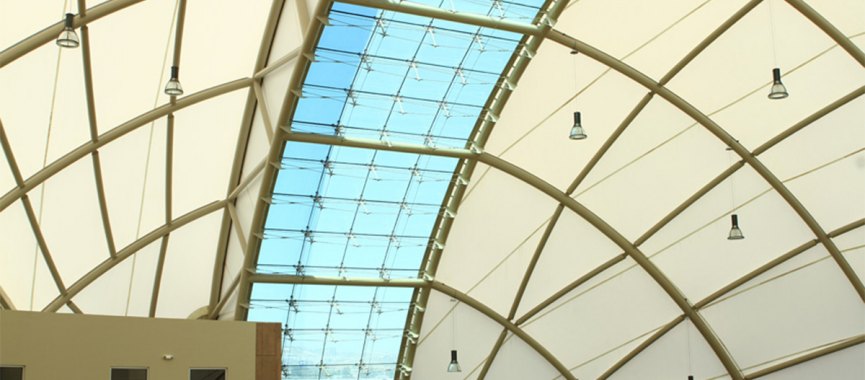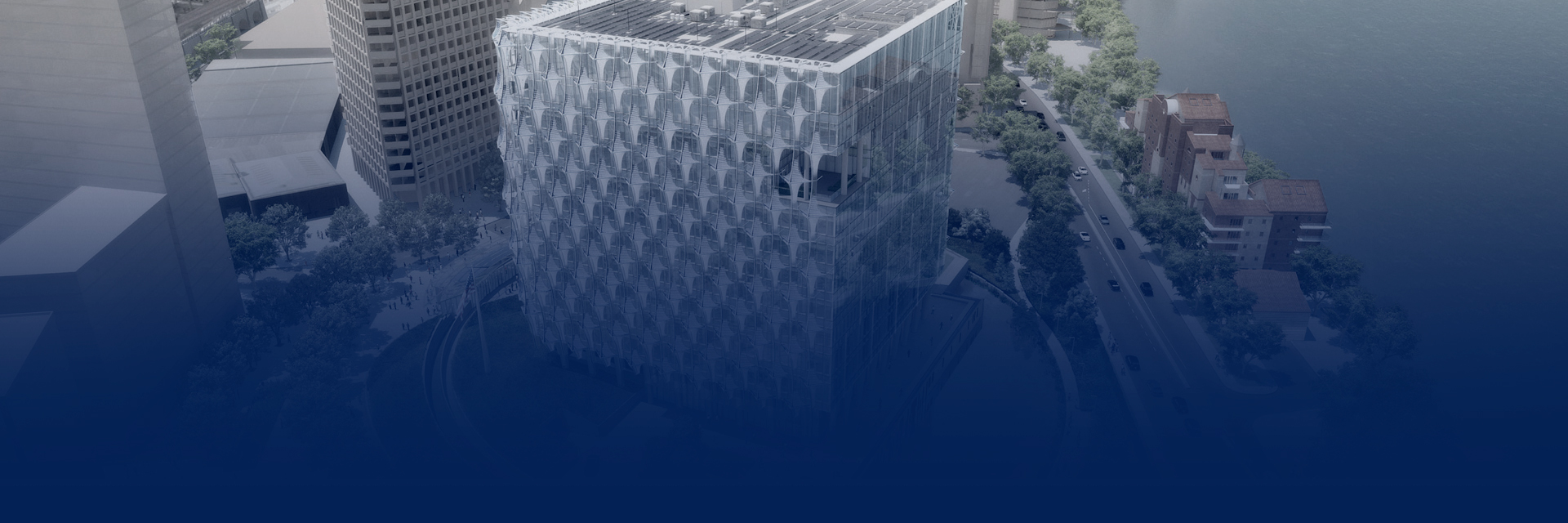DAYLIGHTING

During scientific tests of its solar properties, it was discovered that PTFE fiberglass membranes reflect approximately 72-75 percent of the sun’s radiated solar energy while allowing in approximately 8 to 20 percent of natural daylight to permeate the membrane depending on the strength and thickness of the material.
Membrane Comparisons
| Property: | PTFE Fiberglass | PVC | ETFE Film |
| Translucency | 10-18% | 10-20% | Transparent |
Membrane structures can also contribute to Leadership in Environmental and Energy Design (LEED) credits in such categories as daylighting, innovative design and reduced or recyclable material usage.
LEED Rating System: EBOM
LEED 2009 Credit: EQc2.4
LEED Credit Overview: Daylight & Views - Through simulation, the prescriptive path and/ or measurement show that at least 50% or more of all regularly occupied spaces are day lit.
| PTFE Membrane – woven fiberglass with Teflon coating | Solar Transmission: 10-21% Visual light transmittance not listed. |
| ETFE Membrane – transparent film | Visual light transmittance: 91.7%- 40.5% VLT for color variations other than white dependent on printing area. |
| Tensotherm Insulated Membrane – translucent insulated membrane composite using aerogel blankets | Visual Light Transmittance: 15%- 40% |
LEED Rating System: NC, CS
LEED 2009 Credit: EQc8.1
LEED Credit Overview: Daylight - Achieve day lighting in 75% of all regularly occupied spaces.
| PTFE Membrane – woven fiberglass with Teflon coating | Solar Transmission: 10-21% Visual light transmittance not listed. |
| ETFE Membrane – transparent film | Visual light transmittance: 91.7%- 40.5% VLT for color variations other than white dependent on printing area. |
| Tensotherm Insulated Membrane – translucent insulated membrane composite using aerogel blankets | Visual Light Transmittance: 15%- 40% |
Coated fabrics like translucent PTFE fiberglass and transparent films such as ETFE, are available in ranges from 10 to 90 percent.

